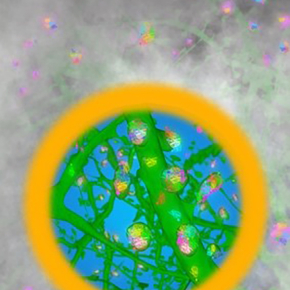Super-resolution squared to reveal the complexity of synapses
Super-resolution microscopy offers enormous opportunities to unravel the complex and dynamic architecture of living cells. However, current super-resolution microscopes are well suited to reveal protein distribution or cell morphology, but not both. Researchers overcame this problem by combining single molecule imaging and STED microscopy on a single platform, revealing the morphology and molecular organization of synapses at nanoscale scales. The study was published in the journal Nature Methods.
Super-resolution microscopy, or nanoscopy, has become an important research tool for cell biology and neuroscience. It allows optical access to nanometric compartments (1 nanometer = 1 billionth of a meter) and to signalling dynamics inside living cells. In recent years, we have seen a significant diversification and cross-fertilization of these techniques, allowing the observation and increasingly accurate analysis of complex biological samples. However, the two main super-resolution techniques, based on the induction of stochastic (by the localization of individual molecules) or deterministic (by depletion) fluorescence, have evolved separately as competing technologies, leaving their potential synergy untapped. Given their complementarity, their combination within the same microscope could offer a "best-of-two-worlds" solution, thus bridging the knowledge gap between the molecular and morphological organization of cells.
Researchers have developed such a microscope, allowing the positions and movements of synaptic proteins to be observed at the nanometric scale in the morphological context of the synapse. They demonstrate the superior performance of the new system compared to existing approaches by providing access at the same time to these two crucial aspects to decipher cellular nanobiology.
This new instrument has been designed in a modular and versatile way, readily integrating other advanced nanoscopy techniques, such as uPAINT (Universal Point Accumulation for Imaging Nanoscale Topography) and SUSHI (SUper-resolution Shadow Imaging) developed in recent years.
New features that will take the performance to an even higher level, while making it also more user-friendly are thus already under development. This should pave the way for new discoveries in cell biology and neuroscience.
